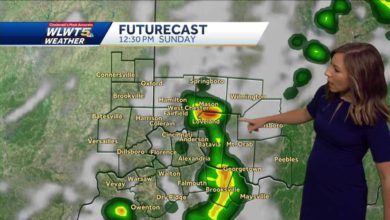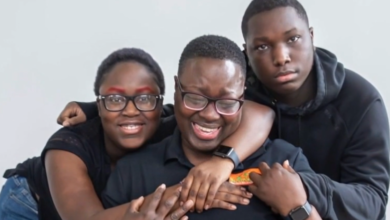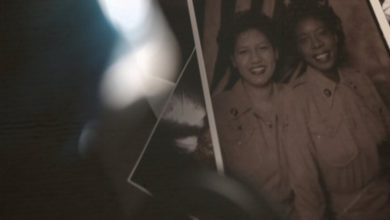
Pat Beall, USA TODAY; Catharina Felke, Jackie Hajdenberg, Elizabeth Mulvey, Aseem Shukla and Sarah Gelbard, Columbia Journalism Investigations
In Philadelphia, the feared avalanche of naked ballots arrived well dressed.
Election officials in October worried that up to 40,000 ballots would be rejected in the general election because they had not been put into a secrecy envelope before being mailed in a second envelope. So-called naked ballots are a common mistake that can invalidate votes.
But in Philadelphia County's 2020 general election, the wave of rejections did not happen. High-profile lawsuits, saturation news coverage and a social media campaign featuring nearly nude messages from actors Sarah Silverman and Sacha Baron Cohen— in his role as Borat — brought naked ballot rejections in Philadelphia County down to a paltry 3,061 as of late November.
Philadelphia's final mail ballot rejection numbers are still being sorted out, along with other counties and states. It could be spring before the full number of rejected ballots is known.

However, early numbers in certain counties across the country show that local election officials, lawmakers and advocacy groups appear to have slammed the brakes on what could have been a national disaster: Instead of rising, the number of rejected mail ballots unexpectedly plummeted in several regions, including large counties key to statewide wins, such as Miami-Dade in Florida and Maricopa in Arizona.
If just 2% of mail ballots had been rejected in the Nov. 3 contest, roughly 1.3 million would have been discarded, a USA TODAY, Columbia Journalism Investigations and PBS series FRONTLINE investigation published in October found.
Instead, new mail ballot rules, extensive publicity over how to vote correctly by mail and broadened opportunities to fix minor errors on a ballot before it was discarded worked to limit wide-scale rejections.
Not everyone sees the reduction of tossed ballots as a positive. President Donald Trump, as part of a sustained campaign to spread disinformation about his 2020 loss, has called the drop in rejections suspicious. “The rate of rejected Mail-In Ballots is 30X’s lower in Pennsylvania this year than it was in 2016," Trump tweeted in November, suggesting the smaller number of rejected ballots was tied to fraud.
In fact, had Philadelphia's naked ballot campaign not worked, the number of Pennsylvania's rejected ballots could have been thirty times higher than in 2016, a CJI analysis found.

Rejection numbers are expected to rise in Pennsylvania and in other states over the next few months, as recounts and lawsuits wind down and give local election workers time to count ballots that arrived too late to be accepted.
Even so, there's room for optimism, said Celina Stewart, chief counsel and senior director of advocacy and litigation at the League of Women Voters, which filed suits in multiple states over mail ballot rules. "I am thrilled that the rejection rates we have seen so far are fairly low," Stewart said. "It could have gone another way, you know, and it has in the past."
Trump isn't alone in complaining about the reduction in rejected votes. Facing tight Georgia runoffs, U.S. Senators Kelly Loeffler and David Perdue are suing in federal court, arguing that more mail ballots should have been scrapped in November. In several states, lawmakers are already pledging to restrict future mail voting.
The numbers drop
By the time an ice storm threatened Canadian County, Oklahoma, Election Board Secretary Wanda Arnold and her tiny staff of five had already been juggling 10,000 voter registration applications and 500 phone calls a day.
Then came the storm and a new set of worries.
"I was concerned about trees being down in the road, not having electricity, the state election board, electrical companies, little old ladies sitting in polling places with no lights and no heat with blankets wrapped around them,” Arnold said.
The late October storm didn't derail election day. And Arnold wound up the vote count with a pleasant surprise: Despite dealing with more than double the number of mail ballots than in the 2016 presidential race, the rejection rate dipped.
There was every reason to believe the number of rejected mail votes in Canadian County and throughout the country would skyrocket. Even small errors such as signing on the wrong line can cost a voter their vote, and millions were voting by mail for the first time.
Spring and summer primary results reinforced concerns. New York City's rejection rate approached two out of every 10 ballots. In Florida, the primary rejection rate shot up 63% from 2016, hitting younger voters, Black voters, first-time voters and Hispanic voters hardest, a state report found.
"The warning was the primary season," said Douglas W. Jones, an author and computer scientist at the University of Iowa who has researched election systems since the mid-1990s.
That trend abruptly reversed in November. Massachusetts slashed its rejection rate for such technicalities as missing signatures by 74% compared with the last presidential election. Delaware's rejections tumbled by 85%.

In Miami-Dade, Florida, rejections fell by 78% from 2016, and in Tulsa County, Oklahoma, they slid by 71%. In North Carolina, half a dozen largely minority counties that in 2016 posted unusually high rejection rates reported 2020 rejections were down sharply, even as the number of mail ballots grew. Mail slowdowns in parts of Michigan didn't affect the Detroit region, where the percentage of ballots discarded for being late dropped.
Heading into November, Arizona's Coconino County, home to part of the Navajo Nation's sprawling Arizona reservation lands, had seemed likely to repeat its outsized rejection rates of 2016. As the Navajo Nation detailed in a federal lawsuit filed earlier this year, the lack of postal access, poor roads and limited transportation on their sprawling reservation lands can make it near-impossible to get a ballot delivered via mail on time.
The tribe lost its battle to extend mail deadlines. But in Coconino, it appeared to win the war: The number of mail ballots rejected there for late delivery plummeted by 97%, "likely due to the additional voting instructions we included with the ballots that had tips on returning the ballot in time," said Donna Casner, chief deputy recorder for the county election office.
Why the numbers dropped
Having someone trot up on horseback to vote their mail ballot at a drive-through was not what Jim Condos had in mind when Vermont launched a blitz of mail ballot reforms. The secretary of state was pleased all the same. "We’ve always had a low rate, but this was really, really low," Condos said of November's rejections — an estimated one-half of one percent.
Drive-through drop-off sites, drop boxes, prepaid postage and instruction sheets sent with each mail ballot combined to reduce the number of uncounted ballots there.
Maryland's Board of Elections also allowed drop boxes, cutting the chances of rejections for late delivery. North Carolina's Board of Elections redesigned envelopes and instructions to avoid confusing blocks of hard-to-read type.
In court settlements, Virginia, Minnesota and Rhode Island agreed to waive requirements for a witness to the voter's signature, three of 25 states where advocacy groups sued over mail ballot rules in a 90-day blitz starting in June. Roughly one of every three suits sought to create or expand a cure period, a time when voters are allowed to fix minor errors before their ballot is rejected.
The ability to cure small errors helps explain why widespread litigation over mismatched signatures did not immediately materialize. Comparing a voter’s signature on a ballot to their signature on official documents, such as voter registration, is one way to guard against fraud.
However, matches are frequently based on a best guess by election workers and have regularly disenfranchised minorities. The Navajo Nation's Arizona lawsuit cited high rates of discarded votes based on signature mismatches. In Florida in 2016, seven of every 10 absentee votes tossed for mismatched signatures were in heavily Hispanic counties. A 2017 study of four California counties found that Asian-Americans' absentee votes were disproportionately discarded because of mismatched signatures.

This month, though, Georgia senators Loeffler and Perdue, along with state and federal Republican groups, are arguing in federal court that not enough ballots were thrown out this November for signature mismatches. The suit mistakenly states that only 0.05% were discarded.
In fact, rejections for mismatched signatures were roughly double that number, according to preliminary Georgia voter data analyzed by Columbia Journalism Investigations. The pattern of smaller numbers and sharp decreases was repeated elsewhere. Maricopa, Arizona's most populous county, slashed its already fractional signature rejections to three tenths of one percent. In Colorado, where large numbers of ballots are frequently set aside because a signature does not match, 33 counties reported double-digit drops in the number of signature rejections and five reported none at all.

In multiple states, widely anticipated litigation challenging signatures never materialized, "and the most important reason is that we made sure people have a way to correct it" during cure periods, said the League of Women Voters' Stewart. "So many people were early voting, it provided a window for people to cure their ballots."
Even when such advocacy lawsuits failed, repeated news stories about litigation created an indirect education campaign.
"I heard of people flying to Texas, risking going to the airport, just so they could make sure they could vote in Fort Worth County, that sort of thing," said Michael McDonald, a University of Florida professor whose U.S. Elections Project tracks voting data.
"It goes back to returning those mail ballots earlier," he added. "That's very clear in the data."
One success is not a solution
The 2020 success is not the same as a solution to problems both new and old, cautions Marc Meredith, professor of political science at the University of Pennsylvania.
"When your starting point is 'This could be a disaster,' it is good when it’s not a disaster," he said. "But if your starting point is 'We should try to make sure we aren’t throwing out a hundred thousand votes,' ultimately the data will reveal there is still lots of work to be done to try to make sure that everyone who’s trying to cast a vote and doing so in a way that’s valid is having that vote count.”
For one thing, election underfunding is chronic, said Allison Riggs, chief voting rights counsel for the Southern Coalition for Social Justice. A House bill setting aside $3.6 billion for elections died in the Senate over the summer, just as election officials were gearing up to handle a tsunami of mail voting and burning through budgets to run an election in mid-pandemic.
As federal money dried up, a Chicago nonprofit group donated millions to local election offices. Running elections by donations, said Stanford Law School professor Nate Persily, was like "a bake sale for our democracy."
That money almost disappeared when conservative groups in Wisconsin, Texas and Philadelphia sued, arguing that the money spent on such things as drop boxes and voter education about correctly filling out ballots might disadvantage their preferred candidates. The cases were dismissed.

Cash-strapped local election officials have even been hailed as heroes for pulling off a safe and largely smooth election. The Department of Homeland Security reported last month that it was "the most secure in American history."
When Georgia Secretary of State Brad Raffensperger recently announced a signature audit in Cobb County, it wasn't because he suspected fraud. “Now that the signature matching has been attacked again and again with no evidence," he said, "I feel we need to take steps to restore confidence in our elections.”
Already, though, efforts to roll back the measures that made mail voting successful this year are gathering steam.
Republican Florida Sen. Rick Scott, who recently said he would support a 2024 Trump presidential bid, is pushing for legislation that would create a national, unified standard for counting ballots, citing the need to protect against fraud and rebuild trust in elections. The goal "is to make sure what works in Florida is incorporated into election systems across the country,” a spokeswoman said in a written statement.

Further, roughly two dozen states temporarily eased mail voting rules as a result of the pandemic and those new policies may expire in 2021, according to data gathered by the National Conference of State Legislatures.
They are going in the wrong direction, said Amber McReynolds, CEO of the National Vote at Home Institute and a former Denver elections supervisor. For years, mail voting has been steadily growing in popularity, supported by both Republicans and Democrats, she said.
This year, more than 65 million voted by mail in the November election, one reason why the hours-long polling place lines that marred spring primaries in Wisconsin and Georgia weren't widely repeated in the general election. A post-election Pew Research Center survey found that roughly seven of every 10 voters interviewed found voting, including mail voting, "very easy."
"Once voters have a chance to vote this way, they’re not really going to want to give it up," said Neil Makhija, a lecturer in law at the University of Pennsylvania and executive director of IMPACT, an Indian-American political advocacy group.
Even among lawmakers skeptical of quickly expanding mail voting, there’s a realization that this is what voters want. “The people voted on it, and they clearly appreciate having the option,” said Matt Hall, a Republican state representative in Michigan, where voters in 2018 passed a referendum making mail ballots available to all registered voters. He says reforms being considered by Michigan lawmakers are focused on restoring faith in the process, such as improving signature verification standards.

However, the Michigan House Oversight Committee, which Hall chairs, also took testimony this month from Trump attorney Rudy Giuliani and others advancing fraud accusations. The hearing's array of baseless claims was turned into a Saturday Night Live skit. But widespread fraud allegations, proven or not, typically pave the way for new restrictive voting laws, said Riggs, the Southern Coalition lawyer.
"It's really not up to politicians to tell voters how they get to vote," said McReynolds of proposed restrictions. "It's up to politicians to make voting accessible for their voters, the customers of democracy."
Source link









